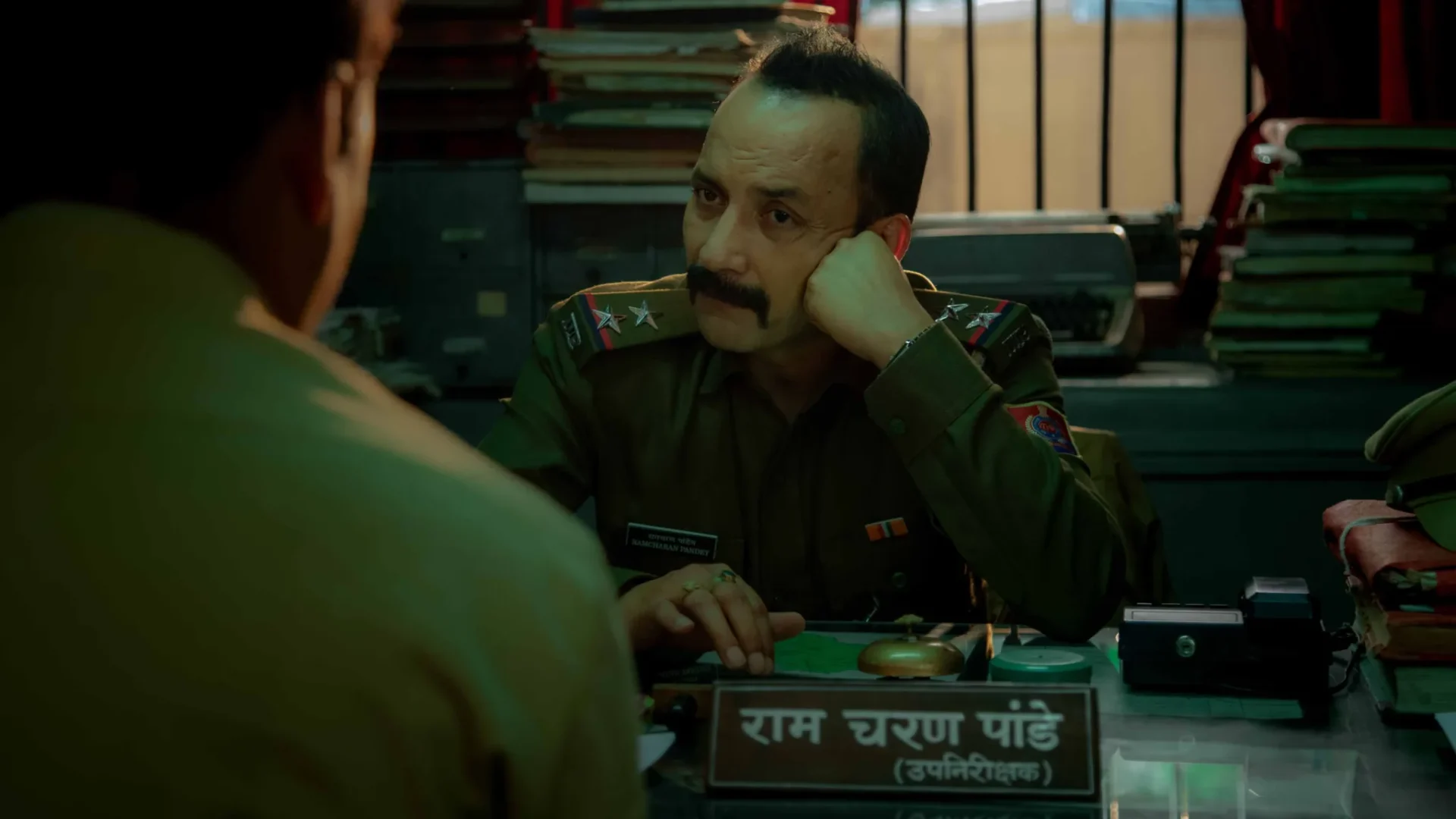The cornerstone for a modern-day neo-noir-tinged serial killer thriller with a very specific griminess and nasty tonality is Na Hong-Jin’s 2008 classic “The Chaser” (remade as “Murder 2” in 2011, but I digress). There is a specific brand of cruelty and pessimism within the urban sprawl and concrete jungle where the cat-and-mouse chase between the serial killer and the corrupt cop turned into a pimp takes place that is compelling not just in plot digressions but in general aesthetics and an overall vibe.
It is somewhat easy to replicate but never easy to evoke that same brand of nihilism entirely. Based on the 2006 Noida Serial Killer Murders, director Aditya Nimbalkar’s debut feature, “Sector 36,” finds itself in the unenviable task of crafting a fictional story from actual events while having to ensure that it does not go too far off the beaten path for a clean ending or closure.
It is fascinating that this film reminds me of “The Chaser” because its remake would use this true crime event as the milieu to transplant the plotting of that Korean thriller. Nimbalkar, however, displays a definite amount of confidence in crafting complicated and despicable characters to root for, taking into account the general complacency and plodding nature of the Indian system as requisites for these characters to exist.
This allows seasoned actors like Deepak Dobriyal and Vikrant Massey to flex their muscles, while Nimbalkar chooses this story to highlight the ever-widening class divide. He uses a clever framing device of a “Kaun Banega Crorepati” analog to comment on the people’s dreams below the economic strata to rise toward the top by answering a couple of questions about general knowledge. Prem, the pedophile, and serial killer would vicariously enjoy the success of climbing that economic ladder through the successful contestants of that program while he would enjoy the chopped-off limbs of his victims.
It was a risky move for a film to completely make a character uncharacteristically cartoonish while appearing to be evil, but Massey’s performance grounds the film. He is playing at a register, where his unpredictability and nonchalance—evidenced by the protection offered by his sponsor—render him a terrifying presence because of his chameleonic ability to act as an ordinary affable servant, hiding rage and barely concealed misogyny underneath.
The impact and effectiveness of his character are only blunted by Nimbalakar inserting a flashback sequence that doubles as an origin story. While that sequence is effective in a vacuum, it feels added on in the film. The backstory works far better when Prem recounts his harrowing childhood integrated into a scene-stealing monologue that works as a coup de grace for the entire film.

Deepak Dobriyal, as SI Pandey, revels in the Newtonian Third Law of Motion, where every action has an equal and opposite reaction, manipulating that axiom to rationalize his corrupt ideals to survive within the police force. That also leads to his reluctance to lodge FIRs for the missing kids from the sprawling slum of Rajiv Colony until his own daughter is barely rescued from being kidnapped by Prem adorned with a Raavan mask, which leads to a change of heart, though not an entire change of system. While a call to action can only occur when disaster strikes too close to home, complacency within an Indian administrative system or a stringent procedure to maintain the status quo is never truly upended.
Through that perspective, Nimbalkar’s film is less about the hunt for a serial killer and more about the realization of a cop about his complicity and a case being solved simply due to the wheels being greased by the right official at the right time. It is more of a study of evil and administrative apathy that leads to a serial killer running rampant, kidnapping helpless children. On the other end, it is apathy towards one’s lot in life and a corresponding lack of empathy towards others belonging to those strata that leads to a rationalization for the killer. This is why the coup-de-grace—the interrogation of Prem by Pandey—is an acting masterclass by Dobriyal, and especially by Massey.
Nimbalkar never reaches the climactic high of that sequence because the film still has thirty more minutes to go. It’s a shame because the filmmaking overall is impressive, be it the cinematography by Saurabh Goswami or veteran editor A. Sreekar Prasad, who utilizes bravura filmmaking styles as well as montage sequences in clever ways to ensure the passage of time and exposition work in tandem.
It is, however, highly inconsistent because the film also jumps forward in time and inserts songs towards the beginning of the final act. It suddenly feels like it is in a hurry to wrap up its story because the film’s central thesis has already been explained. By the time the film finally limps towards its ending tinged with cynicism—par for the course for the genre it is playing—the movie feels exhausted, like the characters battling against a system so steeped in status quo it is hard to shift it. After all, a boot will always remain bigger than a cockroach, however much a cockroach tries. The film, however, fails to evoke that essential dispiriting tone, instead coming across as unenergetic towards the finish line.








![Kin-dza-dza! [1986] Review – An Extremely Amusing Soviet Sci-Fi Cult Classic](https://79468c92.delivery.rocketcdn.me/wp-content/uploads/2021/03/kin-dza-dza-1986-1-768x576.jpg)
